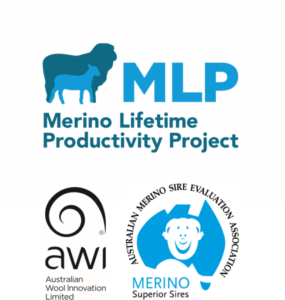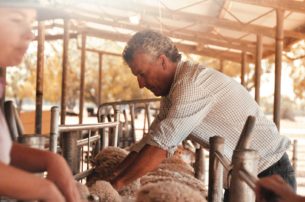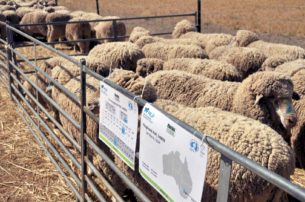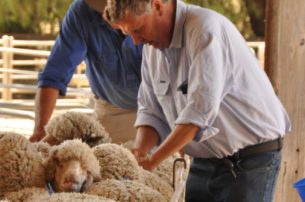The 167 sire spaces across the five Merino Lifetime Productivity (MLP) project sites are filled by 134 unique Merino sires that were supplied from 95 different studs or ram breeding flocks. Repeat use of some sires (termed as Link Sires) across the sites and years enables data to be collated across sites and ewe genotypes. Each of the five sites joined via artificial insemination for two years using between 13 to 25 industry sires each year.
MLP sires were carefully selected from hundreds of sire nominations to allow a comprehensive examination of factors that might influence lifetime productivity, and to generate results that will be both industry representative and relevant.
Collaborating sites from across Australia play a critical role in the project by allowing Merino sires to be compared for a wide range of traits under different environmental conditions and ewe bases. The five sites were selected to represent a range of environmental and production conditions. In particular, sites of contrasting climatic factors and pasture types were included. The provision of ewe bases that offered diverse genetics and Merino types was also taken into consideration to evaluate sire performance across varied genetics and Merino types.
Sire selection was targeted to achieve a balance across each site and drop, along with an overall strategy that the project’s full sire list across all sites would meet the following criteria:
• Industry representative: a balance between horn and poll rams, different skin/wool types, rams with and without Australian Sheep Breeding Values (ASBVs).
• Impact rams: Significant show performance results or widely used AI sires in industry (with or without ASBVs).
• Genetically representative: Selected from four main genetic performance groups within the MERINOSELECT database. These groups were identified using a unique analysis of the MERINOSELECT database that included progeny of sires used between 2006 and 2016.
• Performance range: High and low performance for key traits based on ASBV percentile band tables.
• Fleece value: Sires predicted to maintain, increase or decrease fleece value over time.
• A balance of young (progeny yet to be evaluated) and older rams.
At the conclusion of the sire selection phase, a stocktake of sires was undertaken and showed that the project had achieved its aims to have a sire listing that was both industry relevant and representative. The sires involved offer extremes and combinations of performance that will help to explore drivers of lifetime productivity.
The sire selection process and stocktake report is available for download via the button to the right.




